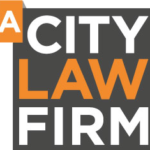It has taken almost 50 years, but no-fault divorce has finally become a reality and the new grounds for divorce have been welcomed by many family solicitors and the LGBTQ+ community.
Previously, unless you could evidence unreasonable behaviour, you needed to use the long-winded routes of separation. This was difficult when you both accepted your relationship is over, but you must wait for this to be formally pronounced.
Even adultery couldn’t be considered grounds for divorce in same-sex marriages. You couldn’t have a clean break financially, without a divorce/dissolution, leaving people in limbo if they were using the separation route.

Using the grounds of ‘unreasonable behaviour’ was quicker and more efficient, which defeated the whole concept of resolution, which many family lawyers favour.
The case of Owens v Owens (2018] UKSC41) exposed the unfairness of the level of proof needed to show the grounds of ‘unreasonable behaviour’. Mrs. Owens was advised that she could only use the ground of 5 Years Separation as she was told her grounds for ‘unreasonable behaviour’ had failed to satisfy the courts.
It is incredible, that until now, despite terrible misconduct or where both spouses agree they wanted to separate and that their relationship is clearly over many are made to wait. It is unbelievable these changes have taken so long…modern law finally catching up with modern families
No more! The Act Divorce, Dissolution and Separation Act 2020 came into force on 6 April 2022.
The benefits:
– It removes the requirement to provide evidence of ‘conduct’ or ‘separation’, replacing this with a simple requirement to provide a statement of an irretrievable breakdown of the marriage or civil partnership or to obtain a judicial separation.
– It removes the ability to defend the decision to divorce or end the civil partnership.
– Allowing joint applications for divorce, dissolution, and separation, meaning that couples can now apply together. This takes away the blame or opposing party stance that often causes issues. This is essential where there are children and harmony is desired.
– Introducing a new minimum overall timeframe of six months (26 weeks) made up of a minimum period of 20 weeks in divorce and dissolution proceedings between the start of proceedings (when the court issues the application) and when the applicant(s) may apply for a conditional order and the current minimum timeframe of 6 weeks between the conditional order and when the order can be made final. This ensures that there is a period of reflection, and where divorce is inevitable, provides a greater opportunity for couples to agree the practical arrangements for the future.
– Updating the legal language used for divorce so ‘Petition’ will become ‘Application’ and ‘Petitioner’ will become ‘Applicant’. ‘Decree Nisi’ will become ‘Conditional Order’ and ‘Decree Absolute’ will become ‘Final Order’. This makes the language simpler and more accessible to those outside the legal profession and aligns across all legislation relating to divorce, dissolution, and separation.

You can apply solely or jointly.
However, bear in mind that if you apply solely, you pay the issue fee. The other party can still dispute this, but the grounds are narrow and are as follows:
– They dispute the jurisdiction of the court in England and Wales to conduct the proceedings
– Where neither party lives in or has any other connection with England & Wales (this could be Scotland or Northern Ireland); or
– They dispute the validity of the marriage or civil partnership; or
– The marriage or civil partnership has already been legally ended.
Flexibility Joint applications can be made on paper or digitally. If for some reason the relationship breaks down and an applicant refuses to complete the joint application, it is possible to ‘switch’ the application from a joint to a sole application.
This all sounds flexible and helpful for family lawyers and separating partners. Let us see what happens next, but we hope there will there be less negativity towards separating.
This should reduce the costs incurred by the parties and hopefully reduce the timeframes.
As resolution solicitors, A City Law Firm is always looking to settle things amicably, swiftly, and cost-efficiently as we have the tools to help the parties achieve this.

